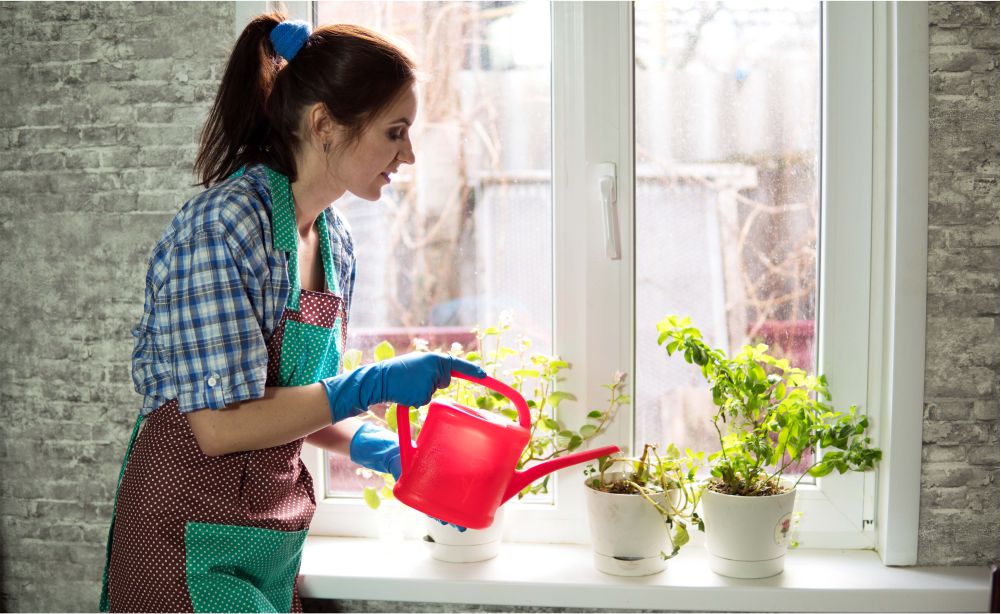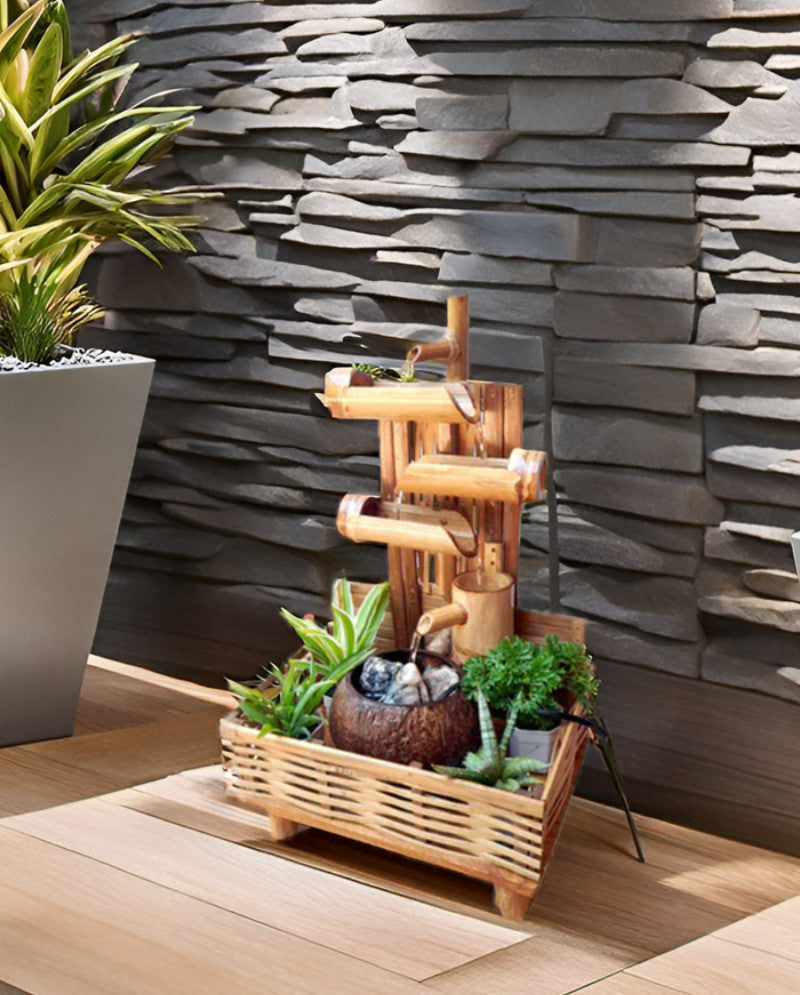
The Best Time to Water Your Plants in the Summer
Share
Drive around your neighborhood on a hot summer day, and you’ll see many approaches to watering plants. Some homeowners break out the hose at the end of the workday, while others program the automatic sprinklers to come on at dawn for 15 minutes a day; still others figure on the plants getting a drink whenever the kids decide it’s time to play in the sprinkler. However, timing your irrigation will not only lead to healthier plants, but it can also save on your water bill.
Morning vs Evening Watering
Much ado is made about watering in the morning compared to watering in the evening. What time is best? The answer is, it depends. In general, it’s wise to administer water from an overhead device like a sprinkler or rain wand in the morning. This allows foliage to dry quickly, denying fungal spores a purchase on leaves. However, not everyone has time to stand in the yard at 6 a.m. between walking the dog and getting the kids off to daycare. If the evening is your gardening go-to time, it’s OK to give your plants a drink, if you take care to deliver the water right to the root zone, where plants need it most.
How to Deal With Wilted Plants
Seeing your favorite hibiscus or peony drooping on a hot day can feel like an alarm bell going off in your body. Wilting makes plants look like they are on death’s door, and in some cases, they may be. However, other things can cause wilting, including pest and disease problems, and even overwatering. Furthermore, plants can wilt on a hot day as a way to cope with temperature, but then rebound when the evening cools off. You can recheck your plants as dusk, and determine if the wilting was due to temporary heat stress before watering. In time, you will get to know your plants and will recognize those that respond to heatwaves in this fashion.
Annual and Perennial Plants
Knowing whether your plants are annuals or perennials is a key factor in deciding when to water plants during a heatwave.
Annuals are plants that finish their entire lifecycle in one growing season. This includes garden favorites like marigolds, impatiens, and pelargoniums. These plants have very shallow root systems and will suffer when the top few inches of soil dry out in the summer. You must water them frequently, even daily, when the mercury rises. Perennial plants have deeper root systems that enable them to survive periods of drought from one season to the next. Some perennials, like butterfly weed and false indigo, have taproots that extend many inches into the soil, in effect tapping into water reserves during periods without rainfall. The best time to water perennial plants is once or twice a week, slowly and deeply so that the water does not run off before it has time to soak into the soil. A rain gauge can be helpful; many plants thrive on about an inch of water per week.
Container Plants
When it comes to container plants, water almost functions like fertilizer: well-irrigated plants show lush growth, while plants that are just getting by on irrigation look stunted and shabby. During the summer, rules about when to water are less important for container plants. The best time to water may be twice a day, once in the morning to give plants a boost before the sun begins to bake down, and once in the evening to replenish what the day took away. The smaller the container, the more you will be filling up the watering can so choose pots with at least an 18-inch diameter.
Vegetable Gardens
There’s no such thing as a drought-tolerant vegetable plant. Neglecting to irrigate your vegetable garden can lead to blossom drop, stunted vegetables, or even plant death. Vegetable plants that need extra water during heatwaves include cauliflower, celery, cucumbers, peppers, radishes, and squash. These plants demand consistently moist soil to produce the best crop. Use drip irrigation, or place a hose at the base of your plants to avoid wetting leaves. If you must rely on sprinklers, water early in the morning to allow the sun to dry the foliage.
Trees and Shrubs
Don’t be lulled into thinking that a passing rain shower gave your trees and shrubs an adequate amount of water: when it comes to long-lived plants like these, you must water deeply to encourage a healthy root system. Sometimes, the best time to water your trees and shrubs is right after a light rain, to piggyback onto this soil moisture and take it to deeper levels. The time of day isn’t as important as achieving a thorough soaking. Place a hose at the base of the shrub or tree, and let it run until the top eight inches of the soil is moist. Water newly planted specimens at least twice a week during heatwaves, as their root systems are small and still developing. Shallow-rooted specimens like hydrangeas, dogwoods, Japanese maples, and magnolias will need extra water to prevent dehydration. Keep watering through the fall to prepare plants for healthy winter dormancy.
Watering: Rules to Follow Every Time
Every plant is different, as is every plant environment. The same plant will need more water if it’s set in a sunny spot than it will in a shadier one; older and larger plants will be thirstier than smaller, newer ones. Garden tools may make the physical act of watering easier, but you’re going to have to pay attention to be sure you’re watering right.
1. Water for the weather
In mild weather (particularly in the spring), you can probably plan to water your potted plants once a week. Plants will need more water as the temperature rises in late spring and summer as the warmer weather causes moisture to evaporate before the plant can use it.
2. Adjust according to size
This one’s straightforward: Larger plants need more water; smaller plants need less water. Also, large pots containing small plants can hold a lot of moisture, so adjust water quantities accordingly. Small pots or hanging plants may need to be watered twice a day, while large pots can be watered once a day.
3. Take advantage of the best times to water plants
If plants do need to be watered twice a day, try to do so in the morning and in the evening. For plants watered once a day, try to do so in either the morning or the evening.
4. Add enough water
You’ll want to add water to pots until it leaks out of the drainage holes in the bottom. (Pots without drainage holes should have some sort of safeguard against root rot, whether that’s rocks or another moisture catcher at the bottom.) This way, you’ll know that the soil and roots have access to moisture throughout the pot. Avoid oversaturating by adding just enough water that it drains out of the bottom; too much can hurt the plant. If you come back again to water later and the top of the soil is moist, you probably don’t need to water again just yet.
5. Aim true
Water should be poured onto the soil, not the plant leaves and flowers. Dumping water on the plant itself can lead to fungal diseases and even scorched spots on the leaves.
6. Stay calm
Some plants and flowers, especially plants in outdoor pots, may look wilted at the hottest times of day. Don’t panic and add water; plants wilt as self-protection to keep the roots from losing too much moisture. Wait to see if the plants perk up again once things cool off at the end of the day; if they don’t, they may need a little more water or more frequent waterings.
7. Keep it dry
If pots are allowed to sit in water (or if they’re drenched in water too often) they can develop root rot and/or die. If you’re using saucers under planters to catch water and dirt, empty them after you water and after it rains to keep the roots and soil moist, not drenched.

